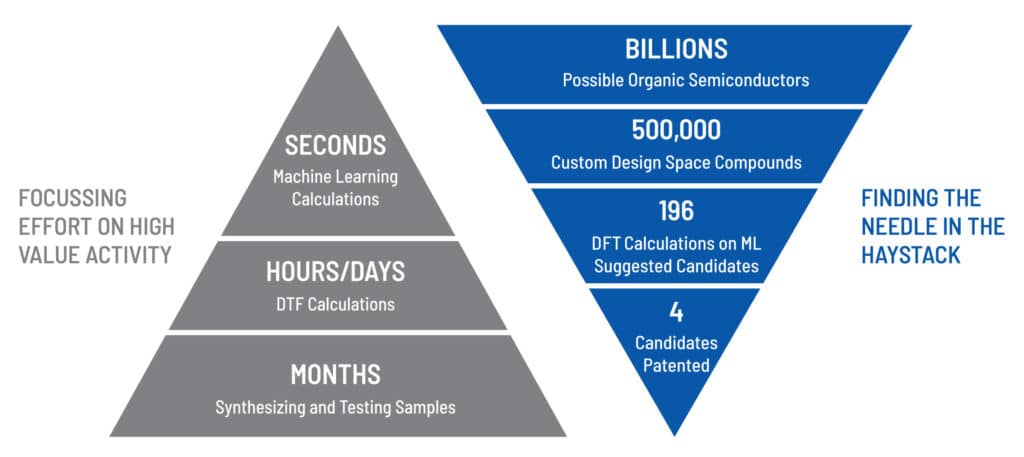
Executive Summary
TIME SAVED
Only 196 DFT calculations performed on >1 Million candidates
IP GROWN
Patents pending on high mobility thieonoacenes
NEW INSIGHTS
Into how molecular topology affects hole mobility
PERFORMANCE IMPROVED
25% increase in hole mobility calculated

“This work demonstrates the utility of using the sequential learning methodology to design experiments for the discovery of novel materials.”
Nobuyuki Matsuzawa, Panasonic

The Challenge
The internet of things requires flexible, lightweight and inexpensive semiconductors. Panasonic is already using organic semiconductors for IOT applications, but they needed a way to reduce processing costs while also increasing performance. Heteroacenes are a molecular class of organic semiconductor that are soluble in organic solvents, enabling cheap spin-coating techniques. But there are millions of them, far too many to exhaustively survey experimentally or computationally. Panasonic and Citrine combined their expertise to meet this challenge.

The Approach
Citrine created a list of feasible molecular candidates (design space) based on the Panasonic scientists’ intuition and knowledge of molecular design principles. In particular, the Citrine Platform’s ability to interpret and analyze chemical formulas – especially the representation of fused rings – was essential for this step.
Next, Panasonic’s molecular simulation team combined their expertise in physics-based Density Functional Theory (DFT) and Molecular Dynamics (MD) simulations with the AI capabilities of the Citrine Platform. MD and DFT are less time-consuming than synthesizing and testing physical samples, but they still take days. Citrine’s AI was able to focus the Panasonic team’s efforts on simulations with the highest likelihood of success.


The Results
With the help of Citrine, Panasonic designed a molecule with 25% higher hole mobility than they had previously seen, in record time. This compound and 3 others discovered via this AI-driven workflow are now patent pending, and Panasonic plans to synthesize them in the near future.
In addition to reduced R&D time and cost, the Panasonic team gained insight into the effects of molecular structure and fused thiophene rings on hole mobility. This scientific knowledge is now captured in the machine learning models and can be reused on future projects.

